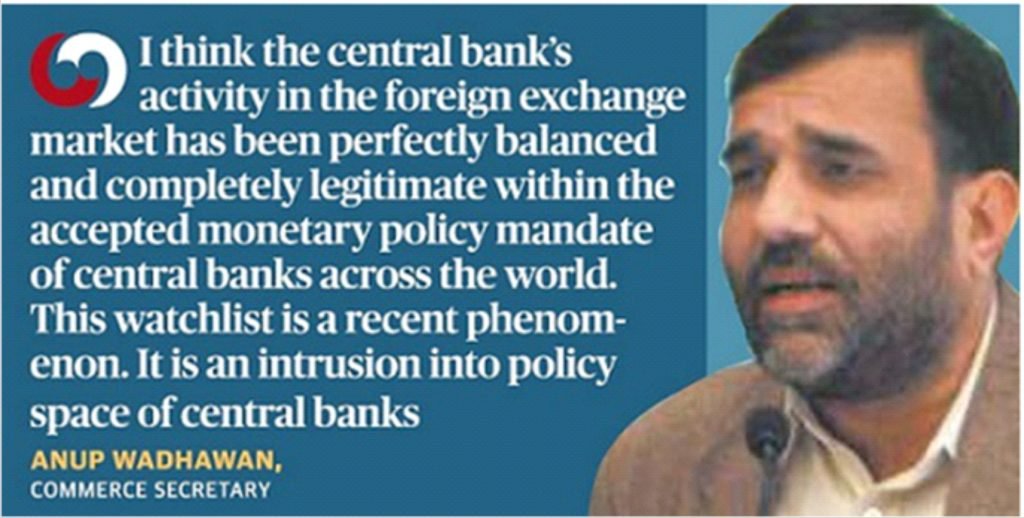Current Affairs (22nd April 2021)
World Press Freedom Index, 2021
Context:
- World Press Freedom Index 2021 is published by the international journalism not-for profit body, Reporters Without Borders (RSF).
About:
- The latest index ranks 180 countries.
Indian scenario:
- While India has not slipped further, however, it continues to be counted among the countries classified “bad” for journalism and is termed as one of the most dangerous countries for journalists trying to do their jobs properly.
- It shares the “bad” classification with Brazil, Mexico and Russia.
- India is ranked 142, same as last year, after it had consistently slid down from 133 in 2016.
Why India classified bad for journalism?
- For India, the latest report has blamed an environment of intimidation created by BJP supporters for any critical journalist, whois marked as “anti-state” or “anti-national”.
- Prime Minister “tightens his grip on media”. With “four journalists killed in connection with their work in 2020, India is one of the world’s most dangerous countries for journalists trying to do their job properly”.
- Journalists “are exposed to every kind of attack, including police violence against reporters, ambushes by political activists, and reprisals instigated by criminal groups or corrupt local officials”.
- Ever since “the general elections in the spring of 2019, won overwhelmingly by Prime Minister, pressure has increased on the media to toe the Hindu nationalist government’s line”.
- Indians who espouse Hindutva, the ideology that gave rise to radical right-wing Hindu nationalism, are trying to purge all manifestations of ‘anti-national’ thought from the public debate.
- The coordinated hate campaigns waged on social networks against journalists who dare to speak or write about subjects that annoy Hindutva followers are terrifying and include calls for the journalists concerned to be murdered.
- RSF has highlighted that the “campaigns are particularly violent when the targets are women”. Further, it said that criminal prosecutions are meanwhile “often used to gag journalists critical of the authorities” with sections for sedition also used.
- In 2020, the government took advantage of the corona virus crisis to step up its control of news coverage by prosecuting journalists providing information at variance with the official position.
- While the pro-government media pump out a form of propaganda, journalists who dare to criticise the government are branded as “anti-state,” “anti-national” or even “pro-terrorist” by supporters of the ruling political party.
Global Scenario:
- Norway topped the list followed by Finland and Denmark, while Eritrea is at the bottom.
- China is ranked 177, and is only above North Korea at 179 and Turkmenistan at 178.
- In the South Asian neighbourhood, Nepal is at 106, Sri Lanka at 127, Myanmar (before the coup) at 140, Pakistan at 145 and Bangladesh at 152.

Civil Service Day, 2021
Context:
- Every year April 21 is marked as National Civil Service Day.

About:
- It is a day to appreciate the tremendous work done by officers engaged in public administration, in various departments of the central and state governments.
- Men and women who work selflessly in public administration, are referred to as civil servants.
- The Government of India chose April 21 as the National Civil Service Day as on this day the country’s first home minister, Sardar Vallabhbhai Patel addressed the newly appointed Administrative Services Officers in 1947.
- The historic occasion took place at the Metcalf House in Delhi.
- Sardar Vallabhbhai Patel, had referred to the administrative officers as the ‘steel frame of India’ or in other words the backbone of the country’s administration.
- Sardar Patel, in his special address, laid out the golden rules and principles of good governance for the civil servants.
State of the Global Climate 2020
Context:
- World Meteorological Organization (WMO) released its annual State of the Global Climate for 2020.
About:
- Extreme weather combined with COVID-19 in a double blow for millions of people in 2020. However, the pandemic-related economic slowdown failed to put a brake on climate change drivers and accelerating impacts.
- 2020 was one of the three warmest years on record, despite a cooling La Niña event. The six years since 2015 have been the warmest on record. 2011-2020 was the warmest decade on record.
- India experienced one of its wettest monsoons since 1994, with a seasonal surplus of 9% that led to severe floods and landslides.
- Cyclone Amphan, which hit Kolkata in May 2020, has been named as the costliest tropical cyclone for the North Indian Ocean region that brought about an estimated loss of USD 14 billion.
The WMO report listed key indicators of irreversible changes in the global climate:
- Greenhouse Gases: Notwithstanding the economic slowdown due to the COVID-19 pandemic, emission of major greenhouse gases increased in 2019 and 2020. More to it, the level of greenhouse gas emission will be higher in 2021.
-
- Concentrations of the major greenhouse gases continued to increase in 2019 and 2020. Globally averaged mole fractions of carbon dioxide (CO2) have already exceeded 410 parts per million (ppm), and if the CO2 concentration follows the same pattern as in previous years, it could reach or exceed 414 ppm in 2021.
- Oceans: In 2019, the oceans had the highest heat content on record. In 2020, it has broken this record further. Over 80 % of the ocean area experienced at least one marine heatwave in 2020. The percentage of the ocean that experienced “strong” marine heat waves (45 %) was greater than that which experienced “moderate” marine heat waves (28 %).
- Sea-level rise: Since record-taking started in 1993 using the satellite altimeter, sea-level has been rising. However, there was a blip in summer of 2020 that recorded a drop in sea level. It is due to the La Niña induced cooling. “Sea level has recently been rising at a higher rate partly due to the increased melting of the ice sheets in Greenland and Antarctica.”
- The Arctic and the Antarctica: In 2020, the Arctic sea-ice extent came down to second lowest on record. The 2020 Arctic sea-ice extent minimum after the summer melt was 3.74 million square kilometre, marking only the second time on record that it shrank to less than 4 million sq km. In a large region of the Siberian Arctic, temperatures in 2020 were more than 3°C above average, with a record temperature of 38°C in the town of Verkhoyansk.
-
- The Antarctic sea-ice extent remained close to the long-term average. However, the Antarctic ice sheet has exhibited a strong mass loss trend since the late 1990s.
- This trend accelerated around 2005, and currently, Antarctica loses approximately 175 to 225 Gt per year, due to the increasing flow rates of major glaciers in West Antarctica and the Antarctic Peninsula.

US currency watchlist
Context:
- Indian Commerce Secretary has questioned the rationale behind the U.S. government’s decision to put India on the watchlist for currency manipulators.
- Besides, the list also constituted an intrusion into the policy space needed by central banks around the world to meet their mandates.

Issue:
- The U.S. Treasury Department had recently retained India on a watchlist for currency manipulators submitted to the U.S. Congress, citing higher dollar purchases (close to 5% of the gross domestic product) by the Reserve Bank of India (RBI).
- Another trigger for the inclusion on the currency watchlist is a trade surplus of $20 billion or more.
- India was added to the list for a second time in December 2020. It was first added to the list in December 2018 and later removed in 2019.
Background:
- It is a mandate of the central bank to provide stability in the currency because of which central banks buy and sell foreign currency.
Currency manipulation
- The US Treasury department defines currency manipulation as when countries deliberately influence the exchange rate between their currency and the US dollar to gain “unfair competitive advantage in international trade”.
Trade surplus:
- India enjoys a trade surplus of $20 billion or more with the U.S.
- India’s trade surplus with the U.S. grew by about $5 billion to $23 billion in 2020-21, from around $18 billion in the previous fiscal year, as imports fell more sharply than exports in the COVID-affected year.
Stand of India:
- The RBI has been only taking necessary steps to maintain stability in the financial markets and not accumulating forex reserves like China did in the past.
- The central bank’s activity in the foreign exchange market has been perfectly balanced and completely legitimate within the accepted monetary policy mandate of central banks across the world.
Finance Bill, 2021
Context:
- The Union Cabinet has given ex-post facto approval for the Government amendments to the Finance Bill, 2021 (enacted on 28th March 2021 as the Finance Act, 2021).
About:
- The amendments were essential to clarify and rationalise the proposals further and address stakeholders’ concerns arising out of amendments proposed in the Finance Bill.
- The Government amendments to the Finance Bill, 2021 shall provide equity and inclusiveness to all the taxpayers by addressing stakeholders’ concerns arising out of amendments proposed in the Bill.
- The Government amendments to this Bill are tax proposals which shall generate timely revenue for the Government and streamline existing provisions by addressing grievances of the taxpayers.

